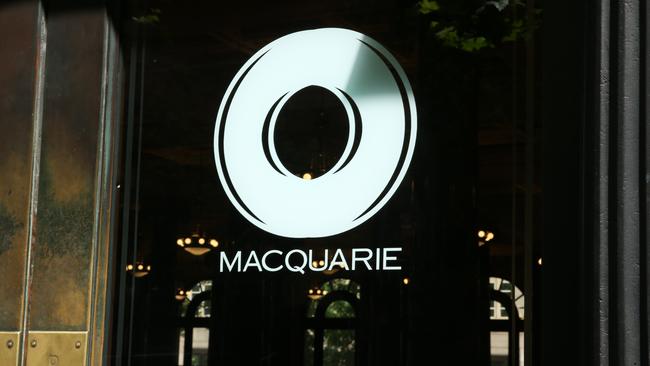
Macquarie’s sale of its global public markets operation says more about the rise of private asset management: covering private credit, infrastructure and real assets as well as the relative demise of traditional asset classes.
Booming private markets are an area now commanding the bulk of fund flows as big investors chase relatively high and stable returns. Adding to the sense of Macquarie’s hasty retreat from shares, the sale comes at a terrible point at in the cycle, with Wall Street returning to its bear market.
Like all big fund managers, Macquarie has been fighting against the slow decline of public markets, including growth in passive investing, heavy outflows from US equity mutual funds (into private assets). Adding to pressure has been increasing share market volatility and a lack of operating leverage, prompting other active managers to consolidate.
Macquarie’s recent half year accounts highlights the trend setting in: public assets under management fell 4 per cent in the half year to end-March with falls across each of equities, bonds and multi-asset strategies.
The sale – for $2.8bn to Japan’s Nomura – excludes Macquarie’s public markets business in Australia, with investment bank retaining its position as one of the biggest asset managers locally on behalf of big clients. Here the scale from managing $299bn across both public and private strategies in Australia, means it still makes sense to for Macquarie to be a big fish in a smaller pond.

But the sale of Philadelphia-headquartered public assets business, that sits inside Ben Way’s giant Macquarie Asset Management unit, marks an exit by the investment banks from US and European public markets.
Of the funds under management, Macquarie’s public markets business oversees 50 per cent equities mostly in US stocks, 40 per cent fixed income and 10 per cent multi-asset (a combination of stocks, bonds, real estate and cash).
While Donald Trump’s tariff policy has introduced heightened volatility across global share markets, it is understood Macquarie was moving on the trend of private vs public markets rather than geopolitics. The transaction has been underway for several months, well before Trump’s “Liberation Day”.
Macquarie’s Way says the sale allows Macquarie Asset Management “to build on our leading global position in private markets...as we focus on providing solutions for our institutional, insurance and wealth clients.”
For managers like Macquarie, the shift to private markets is not only aimed at tapping the wave of inflows. Private markets involves using much more hands on management, which means it can charge higher fees. This ultimately delivers higher returns compared to running a shares and equities portfolio.
The best example of this is the closely watched race between BlackRock and Blackstone. Blackstone is among the world’s biggest alternative asset managers, with the bulk of investments in private credit, property and infrastructure. It now commands a higher premium ($US148bn) despite managing a fraction of Larry Fink’s BlackRock’s $US12 trillion in assets – which is mostly allocated to passive index-based funds.
BlackRock, which itself is aggressively pushing into private markets, has since fallen behind its long-time rival and is now valued at $US134bn. Macquarie shares closed up 0.6 per cent on Tuesday on a broadly flat ASX.
‘Dark markets’
BlackRock’s Fink last month called the end of the long held 60-40 stock and bond investment strategy, saying it should be more 50-30 and 20 per cent in private assets. He is exploring ways of getting private investment strategies into the hands of retail investors – if he can crack that formula it could deliver the next way of growth for investment managers.
The weight of money moving into private markets over the past decade is now an area that’s been exercising regulators here and around the world. The BIS estimates there’s $US2.5 trillion alone in private credit. The lack of visibility has them concerned about the interconnectedness of the so-called dark markets. Super funds now have as much as 20 per cent of their total assets tied up in private markets

The business up for sale also marks a symbolic turning point inside Macquarie. It was previously known as Delaware Investments and was snapped up by former Macquarie boss Nicholas Moore in 2009, as part of a post-GFC shopping spree.
The $US450bn buyout was one of Macquarie’s biggest acquisitions of the era and gave the investment bank much-needed heft on Wall Street as a fund manager, importantly it opened up a new retail distribution channel.
It also delivered fledgling private market strategies to a whole new institutional client base. It invested heavily in public markets, buying blue chip wealth manager Waddell & Reed just three years ago for $US1.7bn hoping to build up scale.
For years, the unwritten rule inside Macquarie has been not to expand into a new market unless the bank had a clear competitive advantage. With Delaware, Macquarie was running up against the likes of much bigger global managers including BlackRock, Vanguard, Fidelity and Franklin Templeton that were operating with scale several times larger.
The combined entry price of Delaware and Waddell & Reed ($3.3bn), reveals Macquarie has exited its public business at a loss. The loss would be steep after taking into account additional investments over the years, management time and the capital allocation. This is highly unusual territory for an investment bank that’s more used to monster paydays.
Tariff watch
US markets remain on heightened alert around every drop of new data around how Donald Trump’s slew of tariffs are impacting inflation and momentum. Trump’s implied threats to fire the US Federal Reserve boss Jerome Powell has not gone down well and so far prompted markets to hit back. Monday’s Wall Street session saw both stocks and the US dollar drop. The number one rule around central banking is any real or implied political interference in the running of monetary policy hurts credibility. This could lead to higher inflation outcomes. Damaged credibility also pushes traditional holders of US dollar assets to diversify to other markets.
The US purchasing managers index is usually a very second-tier data point, but these figures are likely to give the first insight into how US manufacturers are adjusting to tariffs. The index is set to be release early morning Thursday, Australian time.
One figure that has so far stood out, via investment bank Citi is around US used cars. Prices are starting to rise there, suggesting higher-priced new cars are pushing buyers into the second hand cars market.
Citi says the 2,2 per cent month on month change in prices during in the first half of April, while not “abnormally strong” was the biggest increase since July last year.
Elsewhere, it noted residential rents were starting to pick up again, another factor for domestic inflation.
Most attention will be Telsa’s first quarter earnings call, taking place Wednesday morning Australian time. This is shaping up as a big moment for the electric vehicle maker, with rising competition for China and CEO Elon Musk attempting to make his mark in Trump’s White House.
johnstone@theaustralian.com.au




If there was a moment of crisis for investing in stocks and bonds, it must be now with Macquarie chief executive Shemara Wikramanayake’s decision to walk away from more than $285bn the investment bank manages on behalf of small investors, pension funds and insurers globally.